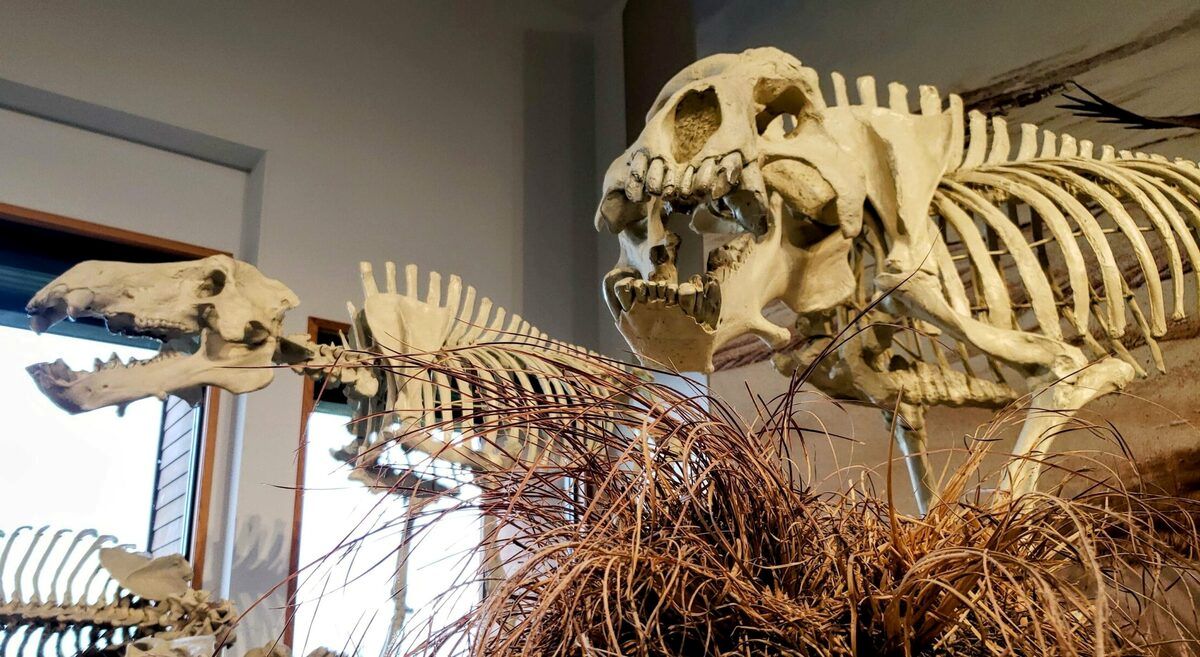Hidden Fossil Treasures Of Nebraska’s Agate Fossil Beds

Have you ever wondered where you can find some of the best-preserved fossils in the United States? Nebraska's Agate Fossil Beds might just be the place for you. This hidden gem offers a unique glimpse into the ancient past, showcasing fossils that date back millions of years. Located in the scenic Niobrara River Valley, the Agate Fossil Beds are a treasure trove for anyone interested in paleontology or natural history. From ancient mammals to prehistoric plants, the site provides a fascinating look at life long before humans walked the Earth. Ready to step back in time and explore these incredible fossil beds? Let's dive into what makes this destination so special.
Hidden Fossil Treasures of Nebraska's Agate Fossil Beds
Nebraska's Agate Fossil Beds National Monument is a treasure trove of ancient wonders. This site, located in the Niobrara River Valley, offers a glimpse into a world that existed millions of years ago. Let's dive into some of the most fascinating fossil treasures you can find here.
Fossilized Mammals
The Agate Fossil Beds are renowned for their well-preserved mammal fossils. These ancient creatures roamed the plains long before humans appeared.
Menoceras
- This small, two-horned rhinoceros lived around 20 million years ago. Fossils of Menoceras are abundant at the site, giving us a detailed look at their anatomy and lifestyle.
Moropus
- Imagine a horse with claws instead of hooves. That's Moropus! These strange creatures had long limbs and claws, making them unique among prehistoric mammals.
Dinohyus
- Also known as the "Terrible Pig," Dinohyus was a massive, pig-like animal. Its fossils reveal a creature with a robust build and fearsome teeth.
Ancient Camels
Camels in Nebraska? Yes, indeed! The Agate Fossil Beds hold evidence of ancient camels that once roamed the area.
Stenomylus
- These small, gazelle-like camels were agile and fast. Their fossils show they lived in herds, much like modern-day antelopes.
Procamelus
- Procamelus was a larger camel with long legs, adapted for running. Its fossils suggest it was a swift and graceful animal.
Prehistoric Horses
Horses have a long history in North America, and the Agate Fossil Beds provide a window into their ancient past.
Parahippus
- This early horse had three toes on each foot. Parahippus fossils help scientists understand the evolution of modern horses.
Miohippus
- Miohippus was another three-toed horse, slightly larger than Parahippus. Its fossils are crucial for studying horse evolution.
Fossilized Plants
It's not just animals that are preserved at the Agate Fossil Beds. Plant fossils also tell a story of the ancient environment.
Sequoia Trees
- Fossilized remains of ancient sequoia trees indicate that the area was once covered in lush forests.
Grasses and Sedges
- These plant fossils show that grasslands were also a significant part of the ancient landscape.
Fossilized Insects
Insects played a vital role in the ancient ecosystem, and their fossils provide valuable insights.
Beetles
- Fossilized beetles found at the site help scientists understand the diet and behavior of ancient animals.
Dragonflies
- These ancient dragonflies were much larger than their modern counterparts. Their fossils are a testament to the diversity of prehistoric life.
Fossilized Fish
The presence of fish fossils indicates that water bodies were once abundant in the area.
Catfish
- Fossilized catfish bones suggest that rivers and lakes teemed with aquatic life.
Gar
- These ancient fish had long, slender bodies and sharp teeth. Their fossils are a fascinating find for paleontologists.
Fossilized Reptiles
Reptiles also roamed the ancient landscapes of Nebraska, and their fossils are a significant part of the Agate Fossil Beds.
Turtles
- Fossilized turtle shells provide clues about the climate and environment of the time.
Lizards
- These small reptiles were an essential part of the ecosystem, and their fossils help paint a complete picture of prehistoric life.
Discovering Nebraska's Ancient Wonders
Nebraska's Agate Fossil Beds offer a unique glimpse into prehistoric life. These fossil beds are a treasure trove of ancient bones, showcasing creatures that roamed the area millions of years ago. Visiting this site isn't just about seeing fossils; it's about stepping back in time. The landscapes are stunning, and the history is rich. Whether you're a history buff, a nature lover, or just curious, this place has something for everyone. The visitor center provides detailed exhibits and knowledgeable staff ready to answer questions. Don't miss the chance to walk the trails and see the fossils up close. It's an educational experience that brings the past to life. Plan your trip to the Agate Fossil Beds and uncover the secrets of Nebraska's ancient history.

